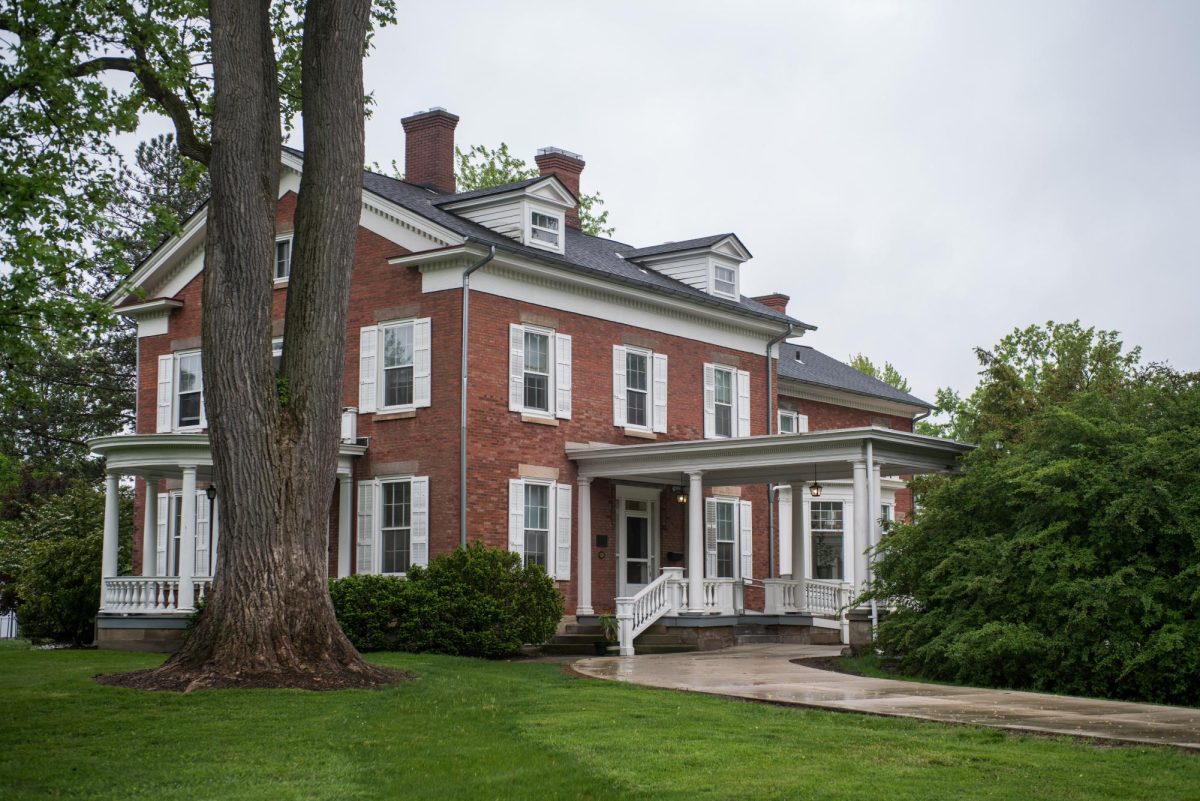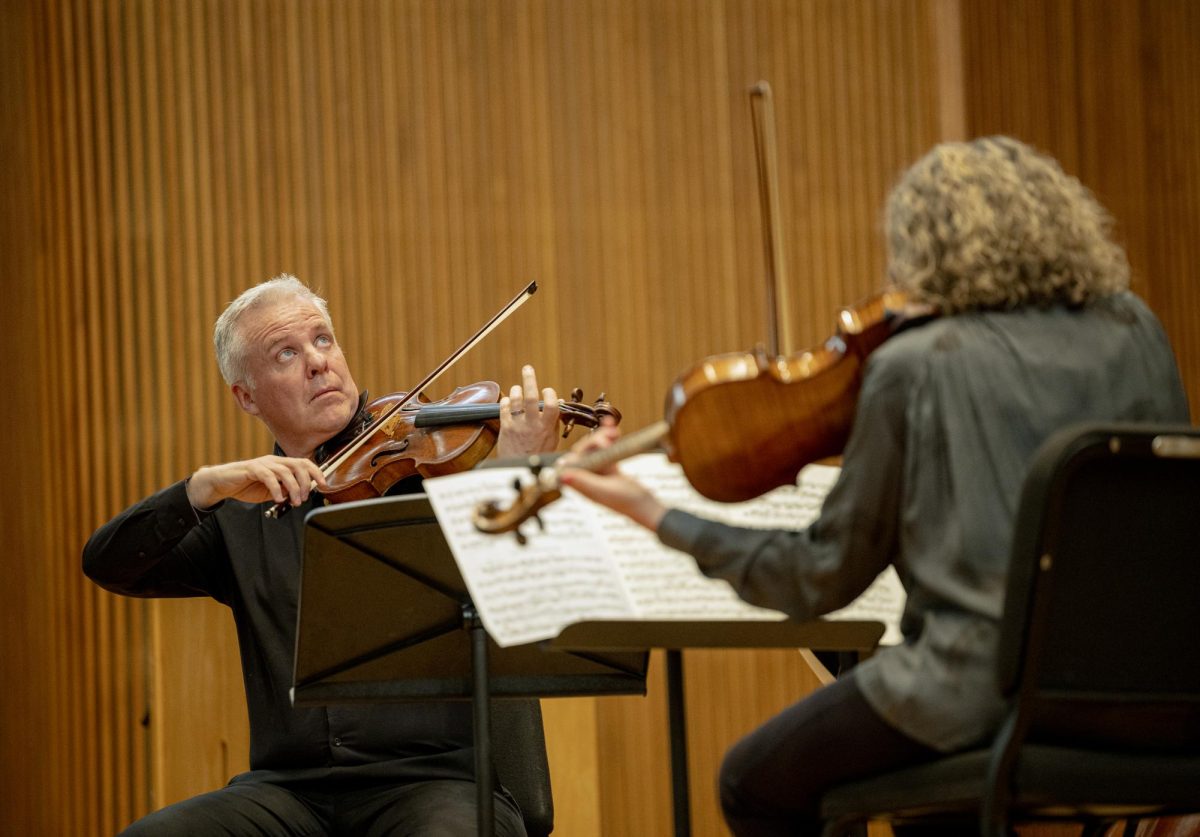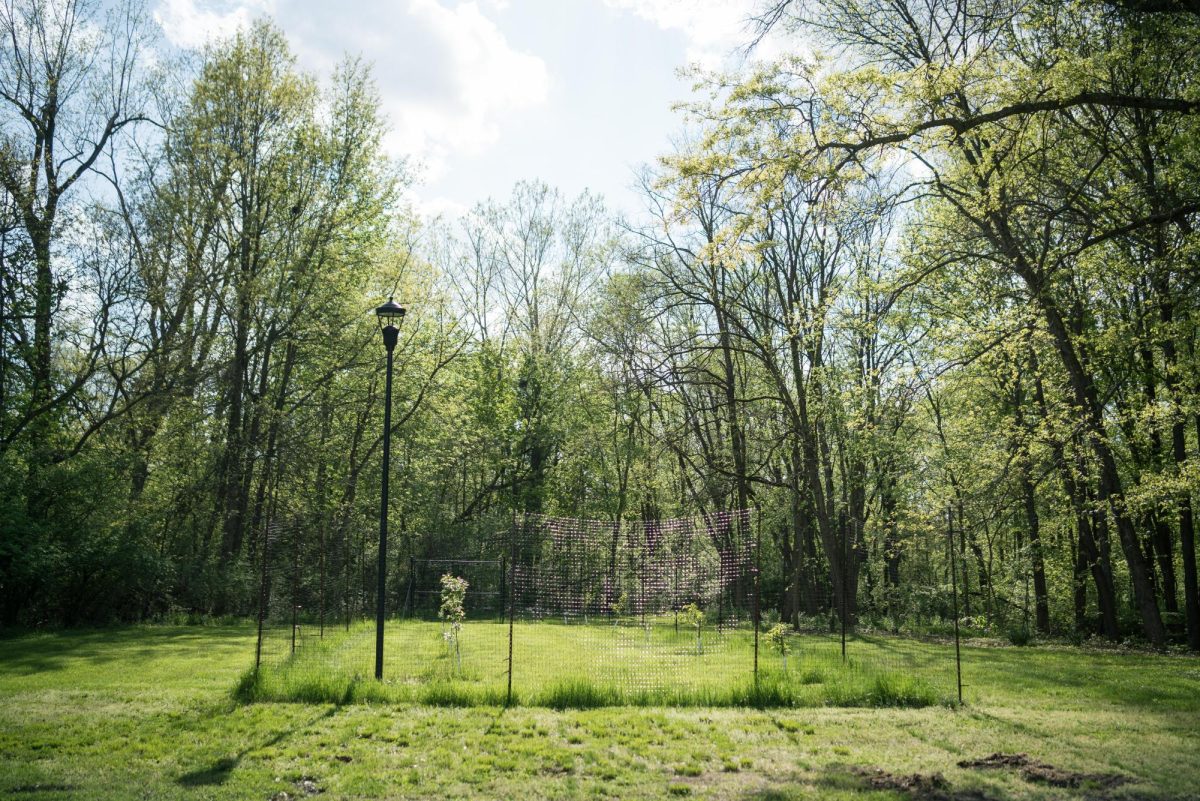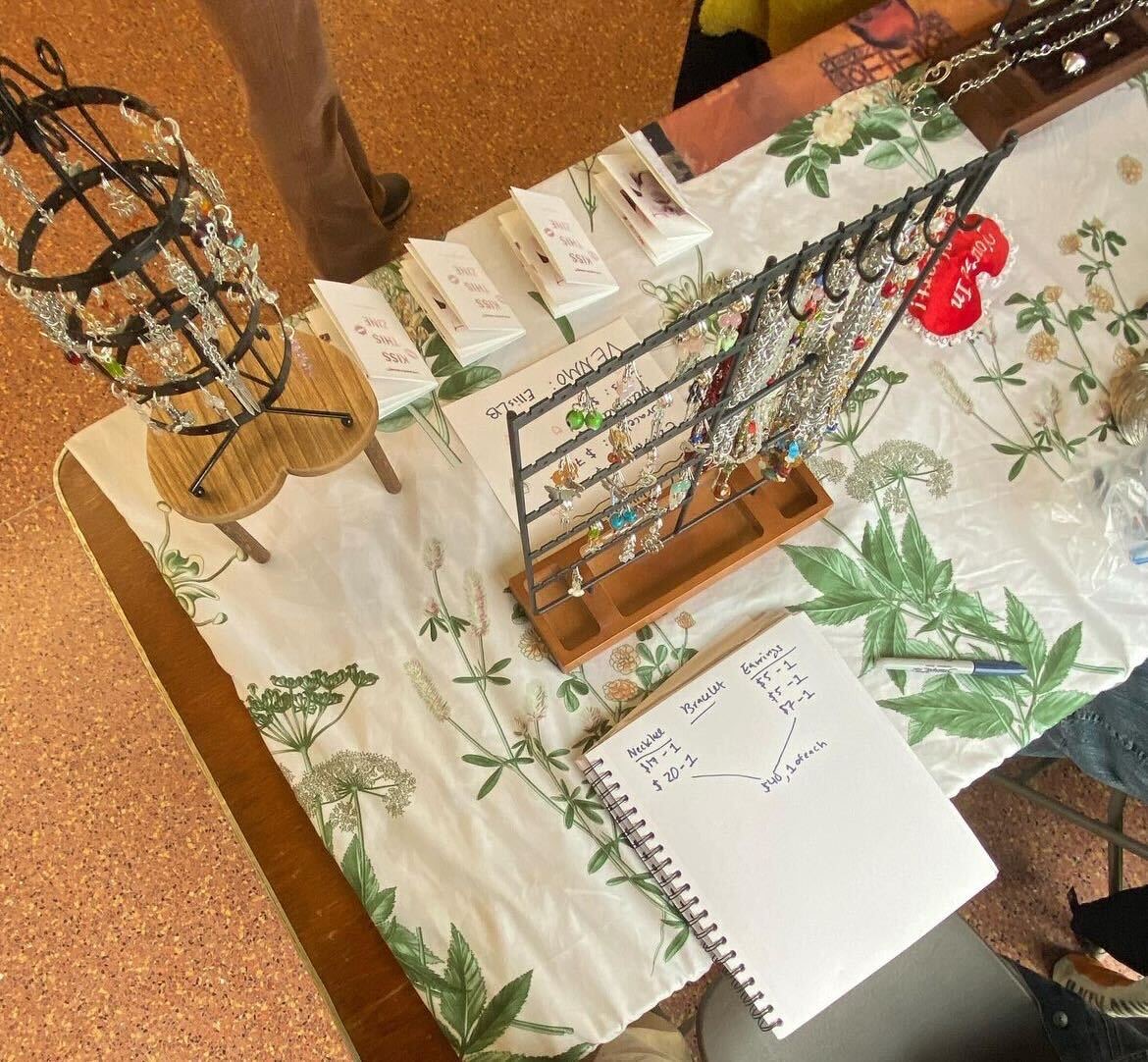Oberlin Opera Theater premiered their production of L’Orfeo Thursday in Hall Auditorium. One of the oldest operas still performed, L’Orfeo tells the story of the title character traversing the depths of the underworld after his bride, Euridice, is killed on their wedding day.
The show is directed by Stephanie Havey, visiting assistant professor of opera theater. Havey previously worked with Oberlin students on last semester’s Albert Herring, a contemporary comedy. Havey’s diversity as a director shone in this production, proving her ability to transform narratives into new, compelling visions. While Albert Herring portrayed its characters as flat, storybook types, L’Orfeo takes classic characters and develops them into fully realized people. Havey is an expert at breaking down a story and pulling humanity out of it, something that was extremely apparent in this retelling as Orfeo grapples with his fears of loyalty and commitment.
Havey’s version of the classic Greek hero is brilliant to look at. The gothic set includes gargantuan drapes of white fabric that cascade over the wedding of Orfeo and Euridice in the first half of the opera. Once our protagonist begins his descent into hell, characters and set pieces get transformed into nightmarish versions of themselves. Wedding chairs are stacked into a towering spire, encaging Euridice’s soul. Former wedding guests appear again with haunting veils enshrouding their glamorous formal wear. These menacing counterparts ultimately reveal that what we have been seeing is a vision in the worried Orfeo’s mind where he loses his beloved wife and his friends are all turned against him.
The heart of the show comes from the two students portraying Orfeo, Conservatory third-year Christopher Leimgruber and Conservatory fourth-year Isabel Merat. Both sang the role magnificently, navigating expertly through the elaborate coloratura Monteverdi’s score provides. Leimgruber maintained his virtuosic abilities throughout the show’s entirety, an impressive feat considering that Orfeo is rarely offstage. His flexible voice filled Hall Auditorium with power while also blending nicely with the orchestra, which was situated on stage behind the performers. Merat’s portrayal of the character was raw and emotional, truly conveying the fear-stricken grief of losing a loved one. She managed to showcase her magnificent vocal technique within the many cadenzas while never stepping out of character.
Another notable performance came from Conservatory first-year Will Sulkow as Pluto, king of the underworld. He was charming, and his robust bass voice perfectly matched the character in a striking debut for a first-year voice student. His chemistry with the queen Proserpina, sung by double-degree third-year Delaney Fox and double-degree fifth-year Cassondra Davies, was convincing, and their scenes together were extremely fun to watch. Fox in particular featured a sumptuous chest voice that melded with the music exquisitely. This gives her Proserpina a seductive edge that succeeds as she convinces Pluto to return Euridice’s soul.
One of the best parts of L’Orfeo was its ensemble. Monteverdi’s choruses are boisterous and complex, and the 15-member ensemble brought them to life. The balance was incredible from voice part to voice part, and they managed to maintain a smooth blend while performing several dances at the wedding. Several soloists were selected from the ensemble, and Conservatory second-year Saige Hoffman was a definite standout. Her rich soprano voice demanded attention and lent itself beautifully to the overall color of the chorus. This was amplified in duets with Conservatory first-year Selkie Liu, whose light voice gracefully danced with Hoffman’s to produce some of the show’s best musical moments.
The orchestra, composed of period-accurate instruments, added an extra level of flare to the production. The juxtaposition of Baroque instrumentation with contemporary staging made for a truly compelling watch, and being able to see Maestro Christian Capocaccia conduct on the stage was an exciting addition to an already enthralling production. Instruments such as the theorbo and sackbut provided a distinctive sound that kept the score intriguing throughout the show.
Overall, L’Orfeo is a stunning close to the 2023–2024 Opera Theater season. Havey once again expertly lent her artistic talents to Hall Auditorium and should be very proud of the work that she has produced while here. Hopefully, Oberlin Opera Theater will continue this winning streak with next semester’s production of Jules Massenet’s Cendrillon.






